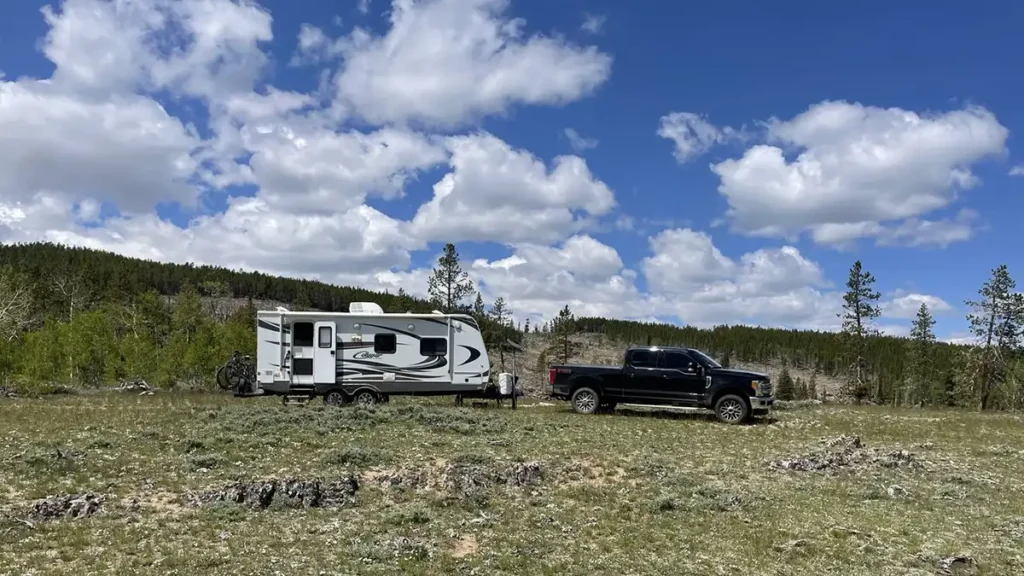The Bureau of Land Management (BLM) does not currently dictate the minimum camping setback from a developed campground. There are no rules that specify how close you can camp next to a BLM developed campground. However, there are rules that dictate where you can disperse camp.

How Close Can You Camp Next to a BLM Developed Campground?
If you found a place on BLM land to boondock, and it happens to be very close to one of the BLM’s developed campgrounds, you may be wondering if there are any restrictions on how close you can set up camp.
The BLM has not published any rules or restrictions on how close you can boondock next to a developed campground, nor how far away your campsite must be.
However, the BLM has done a pretty good job of making sure they’ve eliminated any potential boondocking sites close to any of their developed campgrounds. So, even if you hoped to boondock right next to one, and take advantage of that campground’s facilities, it’s doubtful that you’ll find one.
The BLM Has Some Basic Rules on Where You Cannot Boondock
The BLM has published a few basic rules that restrict where you cannot set up camp while boondocking…
- Your vehicle must travel only on established roads and trails. You are not allowed to drive off the road and damage plants, animal burrows, nor destroy rock formations. Read, “Can I Drive my RV Off-Road on BLM Land?“
- You cannot remove plants, rocks, trees, etc., nor dig out ground, to create a clean, level, campsite. In addition, you are not allowed to set up camp in such a way that you will destroy existing plants, animal burrows, etc. See, “CFR Title 43 § 8365.1-5 Property and resources.”
- You must only camp in places that are already cleared of plants, and already leveled. It’s preferred that you camp in previously-used sites. Also, you can only use sites that are connected to established roads and trails; you cannot drive off-road to reach a desired place to camp.
- You cannot park your vehicle, or set up camp, in such a way that it obstructs the flow of vehicular traffic. This is actually a state law that exists in all states, and is applicable on BLM lands.
- The BLM urges everyone to set up camp at least 200 feet away from bodies of water (lakes, ponds, streams, rivers). While this is not a law or regulation, it’s their recommendation. See, “The 200 Feet Water Setback Rule for Camping, Explained“.
If you take the above five bullet points into consideration, you’ll find that the BLM has already eliminated boondocking and dispersed camping right up next to any of their developed campgrounds. They will have blocked off nearby roads and trails and allowed them to grow over. They will also put up signs nearby that say, “No Camping”.
In most cases however, you’ll still be able to find boondocking sites fairly close by, even if its just a 1/4 mile away or so.

